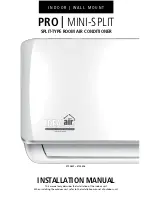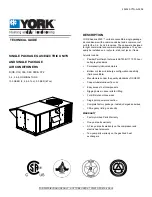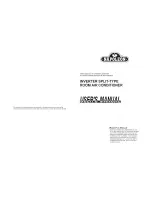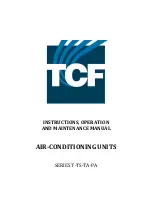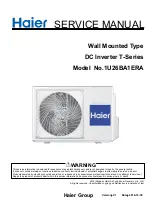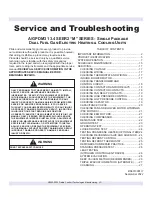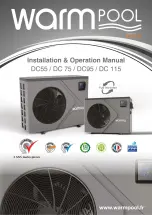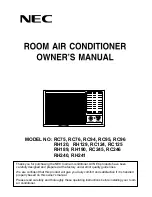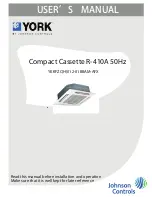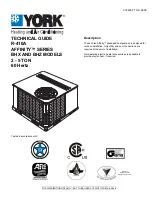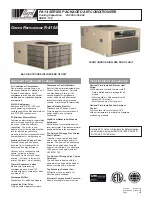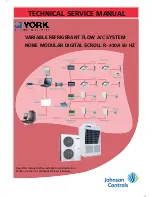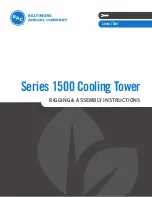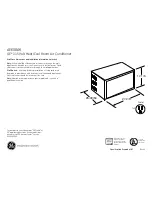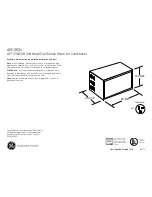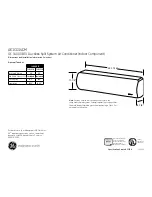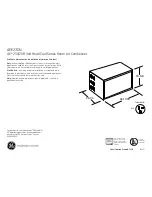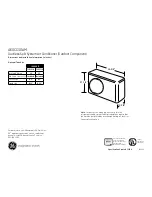
5 WATER DISCHARGE PIPING LAYOUT
5.1 Installation of water discharge piping for
the IDU
Use PVC pipes for the water discharge pipes (outer diameter:
37–39 mm, inner diameter: 32 mm). Based on the actual
installation circumstance, users can purchase pipes with
appropriate length from sales agent or local after-sales service
center, or purchase directly from the market.
Insert the water discharge pipe into the end of the water suction
connecting pipe of the unit, and use the ring clamp (accessory)
to clamp the water discharge pipes with the insulation casing for
the water outlet piping securely.
Use insulation casing to evenly wrap the water suction piping
connections and water discharge piping of the unit (especially
the indoor portion) and bind them firmly to make sure air does
not enter and condense to form water.
In order to prevent the back-flow of water into the interior of the
air conditioner when the unit stops operating, the water
discharge pipe should slope downwards towards the outside
(drainage side) at a slope of more than 1/100. Make sure that
the water discharge pipe does not swell or store water,
otherwise it will cause abnormal sounds.
When connecting the water discharge piping, do not use force to
pull the pipes to prevent the water suction pipe connections from
coming loose. At the same time, set a supporting point at every
0.8–1.0 m to prevent the water discharge pipes from bending.
Slope of 1/100 or more
0.8–1.0 m
> 1.0 m
Make sure all the connections in the piping system are
properly sealed to prevent water leakages.
When pipe bending is required, use water outlet connecting
fittings in the junction box for pipe layout.
When a long water discharge pipe is connected, the indoor
portion must be covered with insulation casing to prevent the
long pipe from becoming loose.
When the outlet of the water discharge pipe is higher than the
pipe connection for water suction, try to keep the water
discharge pipe as vertical as possible, and the water outlet
connecting fittings will bend so that the height of the water
discharge pipe should be within 1000 mm away from the base of
the drainage pan. Otherwise there will be excessive water flow
when the operation stops.
The end of the water discharge pipe must be more than 50 mm
above the ground or from the base of the water discharge slot. In
addition, do not submerge it in water. To discharge the condensed
water directly into a ditch, the water discharge pipe must bend
upwards to form a U-shaped water plug to stop the odour from
entering the room via the water discharge pipe.
50–100 mm
200 mm
Water outlet
pipe fittings
Main water
outlet pipe
Slope of
1/100 or more
200 mm
200 mm
50–100 mm
50–100 mm
Do not exert too much force in order not to break the pipes.
Wrap both the suction piping and water discharge piping
evenly with heat insulation casing to prevent water
condensation.
Water discharge pipes from multiple units are connected to the main
water discharge pipe to be discharged through the sewage pipe.
>30cm
/11.81in
>
30
cm
/1
1
.8
1i
n
>
20
0c
m
/7
8.
74
in
>60cm
/23.62in
(Wall or obstacle)
Maintain channel
Air outlet
Air inlet
M
P
Air inlet
N
Fig 4.4
4.3 Space of installation and maintenance
4.4 Moving and installation
Fig 4.5
Fix with bolt
Since the gravity center of the unit is not at its physical center,
so please be careful when lifting it with a sling.
Never hold the inlet of the outdoor unit to prevent it from
deforming.
Do not touch the fan with hands or other objects.
Do not lean it more than 45°, and do not lay it sidelong.
Make concrete foundation accoding to the sepecif-ications of
the outdoor units.
(Refer to Fig.4.5)
Fasten the feet of this unit with bolts firmly to prevent it from
collapsing in case of earthquake or strong wind.
(Refer to
Fig.4.6)
CAUTION
CAUTION
8















